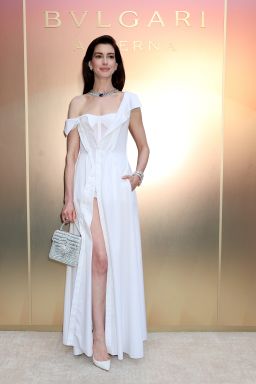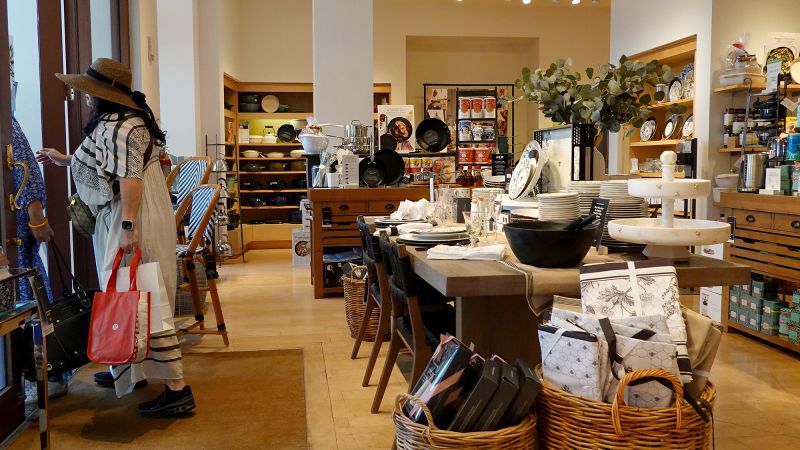American households want the biggest bang for their buck right now when they pull their wallets out to shop. That doesn’t mean they want something cheap all the time.
They’ve been paying more for goods and services for a while because of higher inflation that stubbornly stuck around. What’s also occurred concurrently is that higher interest rates have made it more expensive for shoppers to borrow money – on credit cards for example – for buying things or paying off necessities such as monthly bills.
But even as consumers push through these pressures, they’re still shopping, and seeking deals. Bargain retailers like Walmart and Costco have benefitted, as shown by the retailing industry’s recent slew of first-quarter earnings releases.
Discount behemoth Walmart’s business was buzzing as thrifty shoppers flocked to its big-box stores last quarter to bag deals on groceries and everyday necessities like shampoo, toothpaste, paper towels and toilet paper. Sales at its stores open at least a year increased 3.8% in the quarter from the same time last year.
Other discount purveyors such as Ollie’s Bargain Outlet and Costco also enjoyed a jump in their same-store sales in their latest quarter.
At the same time, there’s a different kind of deal-seeking happening, too.
Perhaps a bit counterintuitively, a bunch of stores that are known for more expensive products that aren’t exactly necessities are also seeing a boom.
Which means that Americans are still spending, but selectively, and that “value shopping” means different things to different people. It doesn’t necessarily mean cheap.
“Value is a watchword for consumers,” said Neil Saunders, retail industry analyst and managing director with GlobalData Retail, in an interview with CNN.
“But value is not just about finding the lowest price. It’s about finding products that people really want and that they will get use out of,” Saunders said. “So gone are the random impulse buys of things that will be placed at the back of the closet and forgotten, and in are the more considered purchases.”
To his point, shoppers are willing to dig deeper if they they feel like they’re getting quality products that are on trend, feel good, and last for a long time, even if it means spending a little bit more.
Abercrombie & Fitch enjoyed a stunning 21% surge in its same-store sales last quarter because it hit the fashion trends that its core younger shoppers are craving, such as low-rise baggy jeans and well-tailored wide-legged pants, and then some.
The retailer, which also owns the Gen Z-favored Hollister brand, is pushing ahead for the first time into newer lucrative areas such as wedding items like bridal dresses and even pajamas as it strives to become a one-stop destination for its clientele.
Williams-Sonoma, which sells pricey kitchenware such as Le Creuset dutch ovens for a few hundred dollars each and $4,000 automatic espresso machines, also reported improving sales in the first quarter. (It also owns upscale home goods and furniture brands Pottery Barn and West Elm.)
“Our recent launches with partners, such as LoveShackFancy and Lilly Pulitzer, have driven sales and attracted new customers by tapping into relevant fashion and home decor trends,” Laura Alber, Williams-Sonoma CEO, told analysts during the company’s most recent earnings call.

Gap Inc., whose brands include Gap, Old Navy, Banana Republic and Athleta, pulled out same-store sales increases for the first time in years in its most recent quarter across all four brands under new CEO Richard Dickson, who came on board last August.
Dickson’s focus has been on getting back to the basics with quality products. This strategy included its newest summer linen clothing collection and surprise marketing moves involving celebrity collaborations. A Gap white shirt dress for Anne Hathaway appeared to thrill shoppers.
The dress became a viral moment on social media for the retailer, which Gap quickly seized upon by releasing a limited pre-order for the dress to its shoppers priced at $158. It sold out in under three hours.
Shoppers are homing in not just on prices but on the benefits that they hope to receive from products for the price that they’re paying for it, Zak Stambor, senior analyst, retail and ecommerce, with market research firm eMarketer told CNN.
“Consumers are thinking long and hard about where and when they are spending,” Stambor said. “A sizable segment of them are focused on value, however, that doesn’t directly correlate to a low price. Shoppers are willing to spend if they see value in an on-trend, well-made dress from Abercrombie – or a healthy salad from Sweetgreen.”
Read the full article here



